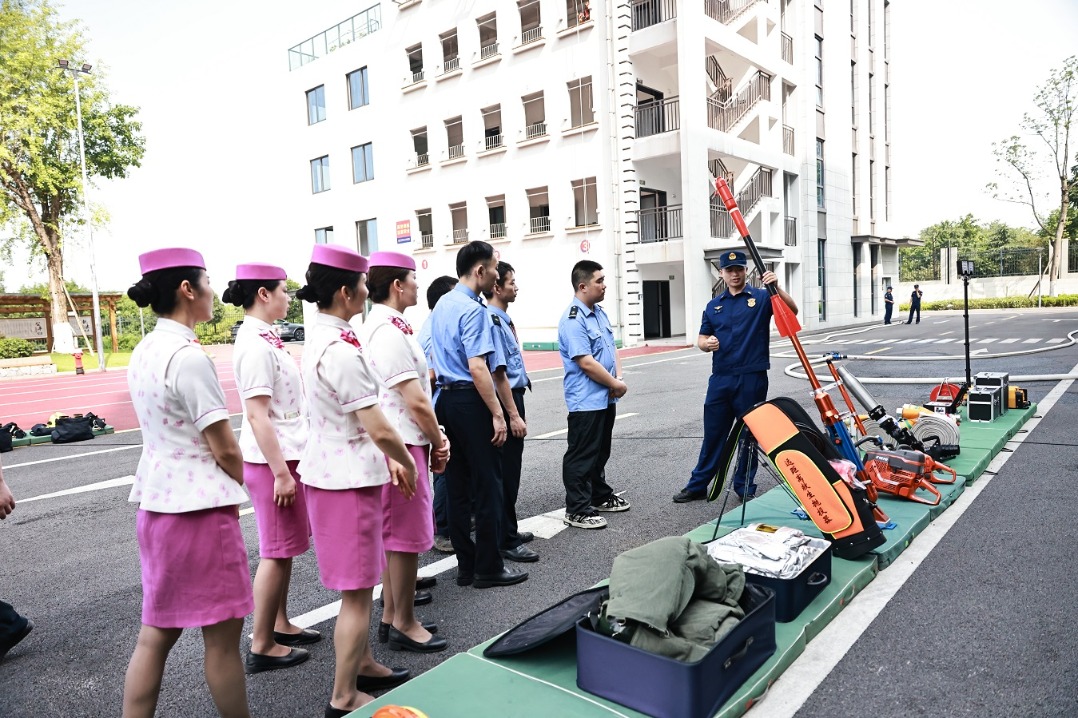Nation vows to keep up good work in poverty alleviation
Plan to continue funding to consolidate effort, improve people's livelihoods


China's achievements in poverty reduction and its new pledges to consolidate last year's results were not made easily, especially in the face of the challenges posed by the COVID-19 pandemic.
A recent report by the United Nations Conference on Trade and Development said the pandemic has been affecting poorer nations disproportionately by fueling mass unemployment, pay cuts and deficits.
Against such headwinds, China will work to create mechanisms to monitor the recurrence of poverty and keep empowering vulnerable farmers, according to a Communist Party of China Central Committee proposal unveiled in November.
The moves aim to consolidate and expand the fruits of a long poverty reduction drive that was intensified by President Xi Jinping, the document added.
The proposal was unveiled as China changes gear from eradicating absolute poverty to fully revitalizing rural areas, a pivotal part of the nation's overall pursuit of common prosperity and development.
The milestone document, Proposals for Formulating the 14th Five-Year Plan (2021-25) for National Economic and Social Development and the Long-Range Objectives Through the Year 2035, serves as a preview of the government's priorities for the next five years.
The central authorities redoubled their poverty reduction efforts nine years ago, aiming to end absolute poverty before this year and build a "moderately prosperous society in all respects".
Tackling rural poverty was made a centerpiece of the 13th Five-Year Plan (2016-20), with the involvement of poor farmers and far-flung regions in the nation's development a priority.
Beate Trankmann, the UN Development Programme's China resident representative, said the 13th Five-Year Plan, which focused on inclusive growth for all citizens, laid important foundations as China shifts to a new development paradigm that places more emphasis on quality rather than speed.
Such efforts include "alleviating poverty, raising the standard of living, improving the accessibility and availability of social services and promoting education", she said.
UNCTAD's Least Developed Countries Report 2020 said the pandemic is expected to plunge more than 32 million people from poorer nations into extreme poverty, with some African and island countries bearing the brunt. That means the proportion of people in those countries living on less than $1.90 a day will reach 35.2 percent, an increase of 3 percentage points from the pre-pandemic period.
The report said the global health crisis has also devastated economic prospects for poorer nations, with their governments reducing their growth targets for the year to October last year from an average of 5 percent to-0.4 percent.
China invested more than 1.2 trillion yuan ($183 billion) in poverty reduction funds in impoverished regions between 2016 and 2019, on measures such as renovating homes, upgrading roads, helping poor families pay medical bills and slashing primary and middle school dropout rates.
That massive financial input led many policy researchers to wonder whether it could be sustained, said Wu Haitao, a professor focusing on rural poverty at Zhongnan University of Economics and Law.
But that speculation has now ended, he said, as "the proposal clearly stated that the funding will last".
Matteo Marchisio, the East Asia head of the International Fund for Agricultural Development, a UN agency, acknowledged the importance of the enormous resources China has allocated for rural regions but said China should work to find mechanisms to make its achievements in poverty reduction sustainable in the long term.
"You can do this by investing in poor areas, making them attractive for investors and developing economic opportunities in these areas," he said. "These are the priorities that China has to pursue over the next few years."
The authorities have been discussing the consolidation of poverty relief achievements since late 2019, when China entered the last stretch of its poverty relief campaign, which lifted more than 93 million people out of rural poverty between 2012 and that year.
Zhang Qi, a regional economics professor at Beijing Normal University who researches rural affairs and poverty issues, said asking local authorities to expand such fruits is a new directive.
He interpreted it as a sign the coverage of assistance programs will be expanded. The so-called low-income population, those who are not below the current poverty line but remain vulnerable to impoverishment, are likely to become the new beneficiaries, he said
"The authorities will also need to ensure that rural regions have industries that last, and poor farmers have stable employment, especially those who have participated in poverty-reduction relocation programs," Zhang said.
The document also reiterates existing rural development strategies, said Zhang Yaguang, vice-dean of the School of Economics at Peking University, with the word "assistance" appearing five times in a short paragraph on poverty relief and rural revitalization, making the theme stand out.
The words "mechanism" and "system" also appeared multiple times, a telltale sign that authorities are placing more emphasis on addressing the issue through scientific planning, he said.
"The document has made clear that the goal in the post-poverty reduction period is to achieve common prosperity," he said.
The document also avoided using "impoverished" to describe people and regions targeted by new aid programs. Instead, it uses adjectives such as "low-income "and "less developed".
Lin Wanlong, a professor of economics and management at China Agriculture University in Beijing, said the choice of wording is a tacit reference to the end of the poverty relief task. But he noted that it is more than just a change of words.
"It means the population and regions targeted by the new policies have changed," he said, suggesting some regions that used to be overlooked by the poverty relief task force may become beneficiaries of the new program to revitalize rural regions.
The term "low-income" population attracted broad attention in May, when Premier Li Keqiang told a news conference in Beijing that about 600 million Chinese earn about 1,000 yuan ($141) per month, barely enough for the rent in mid-sized cities.
He said the COVID-19 outbreak had made the lives of people in low-income communities even harder last year, and the government was beefing up tailor-made measures to alleviate its impacts on them.
- Former deputy chief of China's State Tobacco Monopoly Administration expelled from CPC
- Chongqing railway workers enhance fire safety for summer travel peak
- China-US youth in one voice: Sing for peace
- A cultural flash mob like no other!
- Bond with Kuliang: 2025 China-US Youth Choir Festival opens in Fuzhou
- Summer adventures






































